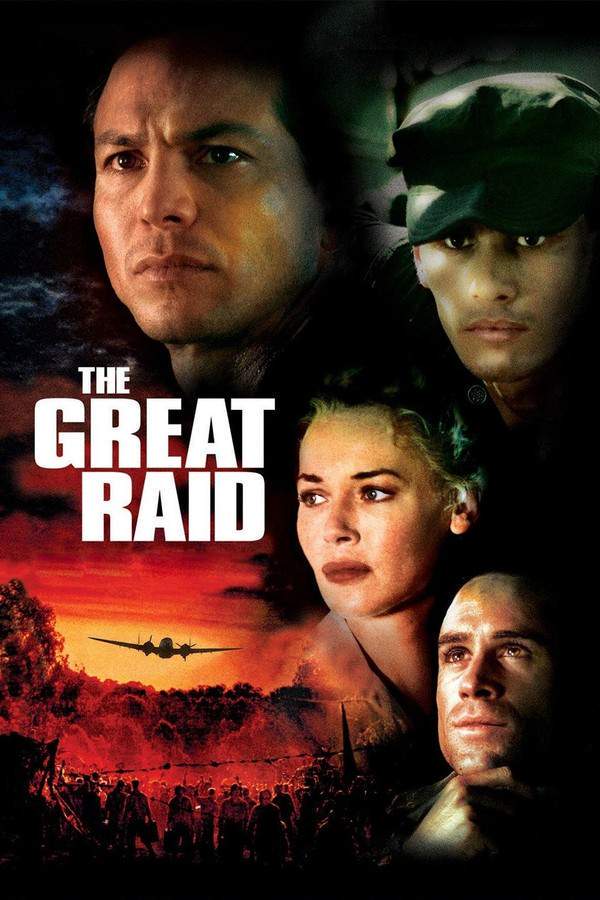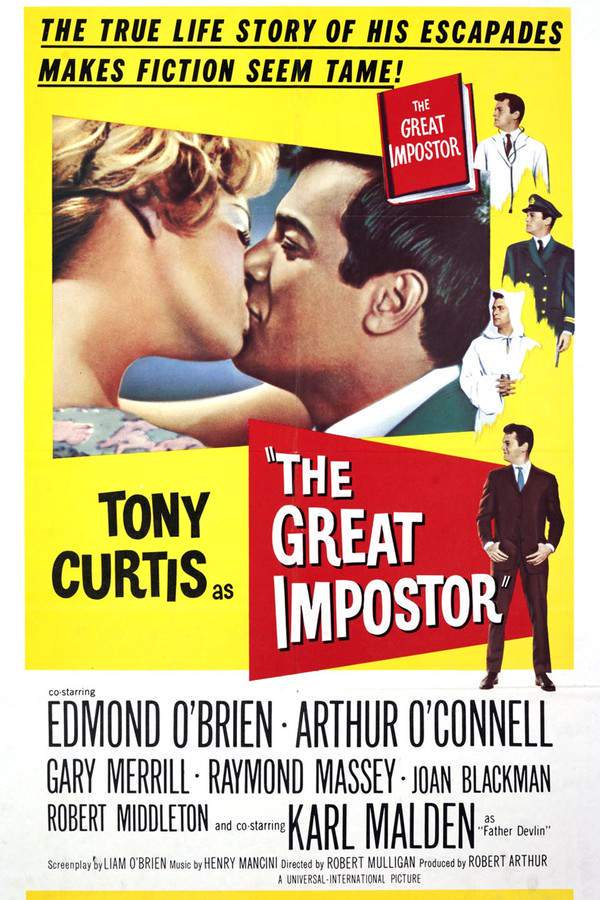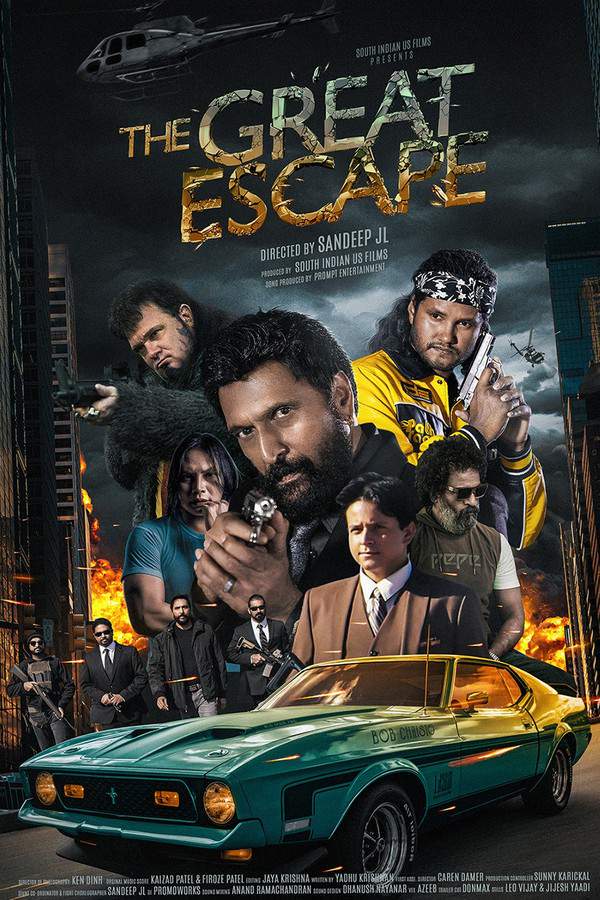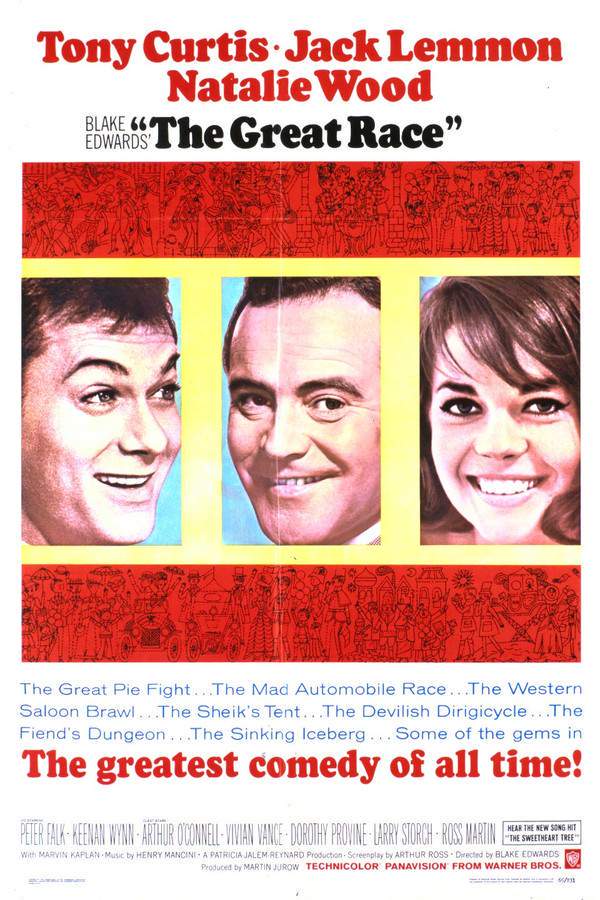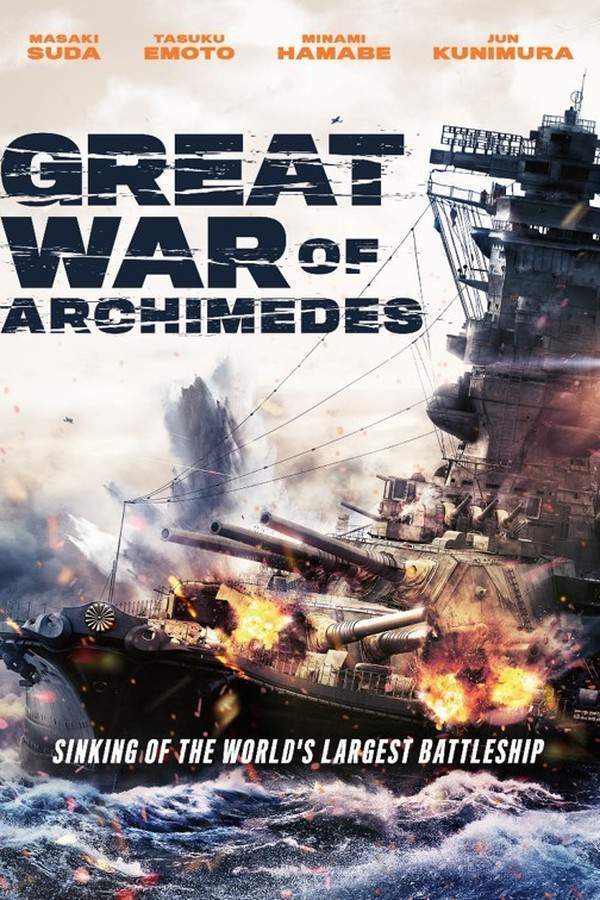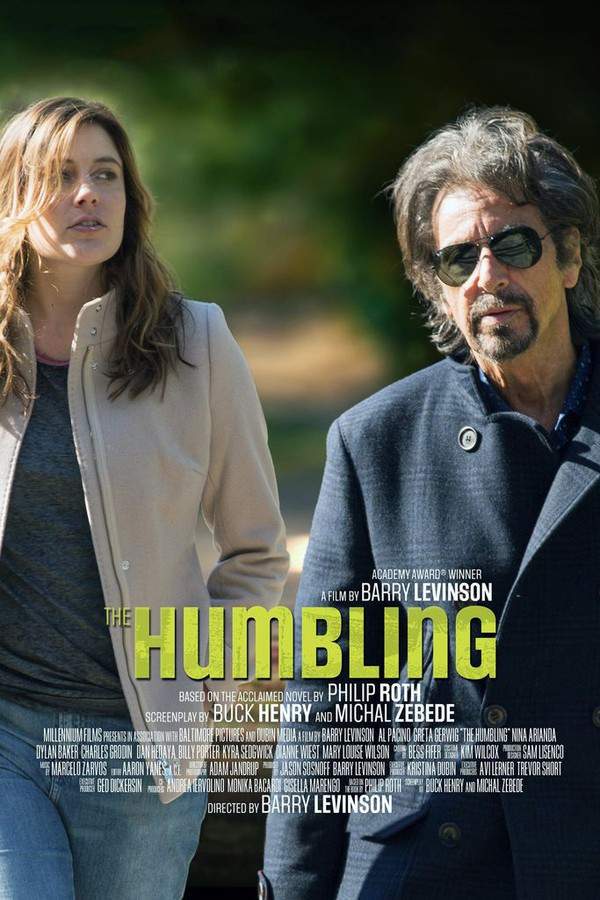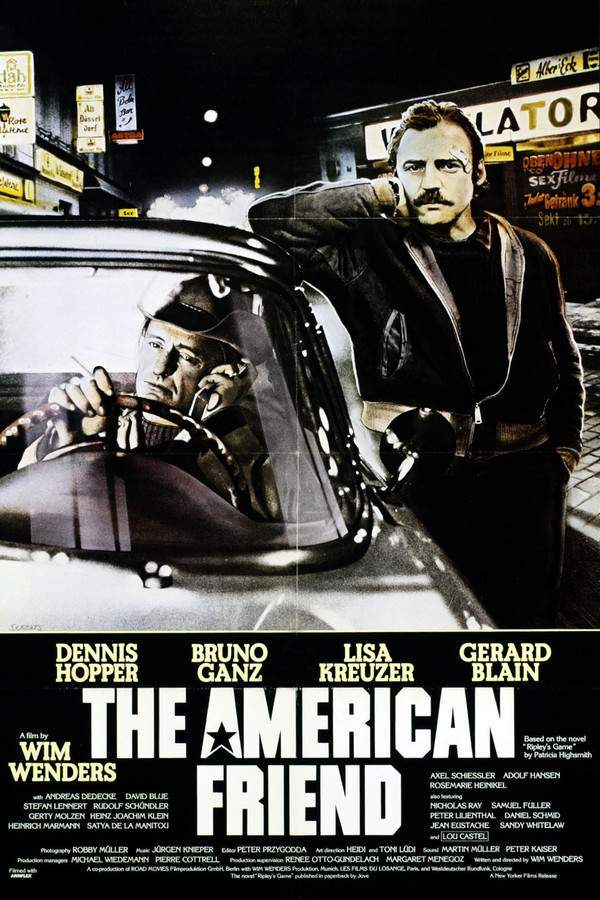
The Great Role 2005
Directed by

Steve Suissa
Made by

First Run Features
The Great Role Plot Summary
Read the complete plot summary and ending explained for The Great Role (2005). From turning points to emotional moments, uncover what really happened and why it matters.
In December 1941, following the surprise attack on Pearl Harbor, the United States entered World War II. Mere hours later, Japanese forces targeted the Philippines, leading to a harrowing retreat of 10,000 Americans and 60,000 Filipinos to the Bataan peninsula. Cut off from any naval support, these troops found themselves trapped as the U.S. strategized to prioritize Europe against Hitler.
Amidst this chaos, General Douglas MacArthur was compelled to abandon the Philippines for Australia, making a solemn vow to return. Just four months later, the beleaguered American and Filipino forces surrendered to the Japanese Imperial Army. Overwhelmed by the sheer number of 70,000 prisoners of war (POWs), the Japanese orchestrated a brutal march comprising 60 miles, which would become notorious as the Bataan Death March, claiming the lives of 15,000 men. The remaining survivors were confined in camps at O’Donnell, Cabanatuan, and Palawan, where thousands more perished from starvation, abuse, and illness.
As 1944 unfolded, the tide of the war began to shift in favor of the Allies, following significant victories in Europe. This resurgence put immense pressure on the Japanese, who, fueled by a propaganda campaign, prepared to defend their homeland with fervor. In a chilling turn, a memo from the Tokyo war ministry emerged in August 1944, detailing a policy of extermination for POWs, ensuring no survivors would remain.
The film opens with the harrowing scenes of a massacre of POWs on Palawan, perpetrated by the Kempeitai, the secret police of the Imperial Japanese military, although historically, the massacre was executed by the Japanese Fourteenth Area Army. The narrative shifts to 1945, where a daring rescue mission is spearheaded by Lieutenant Colonel Henry Mucci (Benjamin Bratt) and Captain Robert Prince (James Franco). Their mission: to liberate over 500 American soldiers held captive at the infamous Cabanatuan POW camp, setting the stage for what would be one of the most audacious rescue attempts in military history.
In the frigid winter of 1944, as World War II neared its conclusion, the Cabanatuan camp housed American prisoners who had endured the Bataan Death March, suffering under brutal conditions; many were afflicted with malaria. With the stakes escalating, Lt. Gen. Walter Krueger (Dale Dye) ordered Mucci and his 6th Ranger Battalion to liberate the camp’s inmates before the Japanese resorted to executing them.
The plot intricately weaves between the experiences of the POWs—led by Major Daniel Gibson (Joseph Fiennes) and Captain Redding (Marton Csokas)—the brave Rangers, the steadfast Filipino resistance, and the ruthless Japanese forces. Among the resistance, nurse Margaret Utinsky (Connie Nielsen), played a pivotal role, smuggling much-needed medicine into the camps at great personal risk.
As the dynamic unfolds, tensions build. Mucci approves of Prince’s well-thought-out raid plan. Meanwhile, news arrives of the tightening noose around the POWs at Cabanatuan, indicating a dire situation as Major Robert Lapham (Brett Tucker) reports that the Japanese would rather execute the prisoners than release them. This adds urgency to the Rangers’ mission while Hikobe ([Masa Yamaguchi]) threatens the prisoners, being well aware of their potential fate if something is not done.
Finally, on the cusp of the raid, friendships and loyalties come to the forefront, facing unimaginable challenges. The narrative builds to a spectacular climax as the brave Rangers put their plan into action, facing the sight of fortified enemy lines and ensuring the survival of their comrades as they enact their mission against seemingly insurmountable odds.
In conclusion, the raid proves successful, culminating in the rescue of 511 POWs. However, the cost is heavy; while Mucci and Prince are honored with the Distinguished Service Cross, the war’s scars remain etched in the hearts of those who endured. Tragedy strikes as Daniel’s hope for reunion with Margaret leads to somber realization; he does not survive their reunion. Despite the brutal aftermath, Margaret’s spirit shines through as she continues her fight, serving tirelessly until liberation in February 1945.
The Great Role Timeline
Follow the complete movie timeline of The Great Role (2005) with every major event in chronological order. Great for understanding complex plots and story progression.
Entry into World War II
In December 1941, the United States officially entered World War II following the surprise attack on Pearl Harbor. This momentous event marked a significant turning point in history, altering the course of the conflict on a global scale.
Japanese Attack on the Philippines
Shortly after the attack on Pearl Harbor, Japanese forces launched an offensive against the Philippines. This led to a desperate retreat of 10,000 American troops alongside 60,000 Filipino soldiers to the Bataan peninsula, where they were cut off from any naval support.
General MacArthur's Departure
Amidst the chaos of the Philippines, General Douglas MacArthur was compelled to leave for Australia. He made a poignant vow to return, promising the troops and the Filipino people that he would not abandon them.
Surrender to Japanese Forces
After months of intense conflict, the American and Filipino forces capitulated to the Japanese Imperial Army. This surrender marked a humiliating defeat and began a dark chapter for the captured soldiers.
Bataan Death March
Following their surrender, the Japanese army forced approximately 70,000 troops into a brutal march known as the Bataan Death March. Over the course of 60 miles, about 15,000 men lost their lives due to exhaustion, cruelty, and deprivation.
Conditions in POW Camps
The surviving prisoners were taken to camps at O'Donnell, Cabanatuan, and Palawan. Inside these facilities, they faced horrific living conditions, with many succumbing to starvation, abuse, and disease.
Extermination Memo from Japan
In August 1944, a chilling memo from Tokyo's war ministry emerged, revealing a policy for the extermination of POWs. This directive intended to leave no survivor among the prisoners, signaling the gravitas of their plight.
Massacre at Palawan
The film opens with the depiction of a massacre of POWs on Palawan, carried out by the Kempeitai, the infamous secret police of the Imperial Japanese military. This brutal event sets a somber tone for the narrative, highlighting the peril faced by the prisoners.
The Cabanatuan Rescue Mission
In 1945, Lieutenant Colonel Henry Mucci and Captain Robert Prince spearheaded a daring rescue mission to free over 500 American soldiers from the Cabanatuan POW camp. The operation promised to be one of the most daring rescues in military history, aimed at providing the inmates a chance at freedom.
Conditions in Cabanatuan
As the winter of 1944 set in, the conditions in Cabanatuan worsened, with many POWs suffering from malaria and malnutrition. Lt. Gen. Walter Krueger urged the Rangers to act quickly before the Japanese could carry out their plans for the prisoners' executions.
Filipino Resistance and Nurse's Role
The narrative also spotlights the brave efforts of the Filipino resistance, including the courageous nurse Margaret Utinsky. She undertook great risks to smuggle medicine into the camps, showcasing the resilience and heart of those who opposed the occupation.
Planning the Raid
Mucci approved Prince's well-formulated raid plan, which was crucial as the situation for the POWs became increasingly dire. Reports indicated that the Japanese were prepared to execute the prisoners, escalating the urgency for action.
Execution of the Rescue Mission
As the Rangers launched their raid, they faced daunting enemy defenses, yet they persevered against significant odds. The high stakes not only tested their military skill but also highlighted their commitment to freeing their comrades.
Successful Liberation
The raid culminated in the successful rescue of 511 POWs from the Cabanatuan camp. However, while Mucci and Prince received commendations for their bravery, the emotional toll and the scars of war remained painfully evident.
Aftermath and Liberation
As the war neared its conclusion, Margaret's determination remained unwavering as she served tirelessly until liberation in February 1945. The hopes for reunification with Major Daniel Gibson are marred by tragedy, emphasizing the deep personal cost of war.
The Great Role Characters
Explore all characters from The Great Role (2005). Get detailed profiles with their roles, arcs, and key relationships explained.
Lieutenant Colonel Henry Mucci (Benjamin Bratt)
As a determined leader, Mucci orchestrates the daring rescue mission to liberate POWs from Cabanatuan. His strategic mind and leadership style inspire those around him, showcasing bravery in the most perilous situations. Mucci grapples with the enormity of war while deeply caring for the lives of his fellow soldiers.
Captain Robert Prince (James Franco)
Prince displays a keen intellect and foresight, actively participating in the intricate planning of the rescue operation. His character brings a mix of courage and compassion, embodying the spirit of the Rangers as they prepare to face daunting challenges. Prince's commitment to the mission and camaraderie with his fellow soldiers make him a vital part of the narrative.
Major Daniel Gibson (Joseph Fiennes)
Gibson, a resilient leader among the POWs, showcases unwavering strength as he endures brutal conditions. His hope for freedom drives him forward, and his character stands as a symbol of the sacrifices made during wartime. Gibson's journey through despair and hope illustrates the human spirit's resilience even in extreme adversity.
Nurse Margaret Utinsky (Connie Nielsen)
Utinsky epitomizes bravery, risking her life to provide crucial medical aid to POWs. Her unwavering spirit and dedication highlight the critical roles played by women during the war, illustrating compassion amidst chaos. Margaret's character serves as a beacon of hope, representing the efforts of countless individuals striving to make a difference.
The Great Role Settings
Learn where and when The Great Role (2005) takes place. Explore the film’s settings, era, and how they shape the narrative.
Time period
December 1941 - February 1945
The movie is set during World War II, focusing on the critical years following the attack on Pearl Harbor. This period saw American forces struggling against Japanese advances, particularly in the Philippines, leading to high-stakes military operations. Events unfold during a time characterized by great human suffering, resilience, and the complexities of wartime strategy.
Location
Philippines, Bataan peninsula, O'Donnell, Cabanatuan, Palawan
The Philippines served as a crucial battleground during World War II, especially highlighted by events like the Bataan Death March. The Bataan peninsula became infamous as a site of retreat for American and Filipino forces. Locations like Cabanatuan and Palawan witnessed significant suffering and bravery, becoming pivotal in the narrative of the war.
The Great Role Themes
Discover the main themes in The Great Role (2005). Analyze the deeper meanings, emotional layers, and social commentary behind the film.
⚔️
War and Sacrifice
The film delves deep into the harsh realities of war, depicting the struggles of prisoners and the soldiers who risked their lives to rescue them. Themes of sacrifice are evident as characters face moral dilemmas amidst the brutality of conflict. This theme resonates as both a somber reminder of the cost of war and an homage to heroism.
🤝
Camaraderie
Friendship and loyalty are crucial themes, highlighted by the bonds forged among POWs and rescuers alike. The courage to stand together in the face of adversity underscores the human spirit's tenacity. These relationships play a significant role in the characters' resilience and determination throughout their harrowing experiences.
💔
Loss and Hope
The narrative is plagued by loss yet buoyed by hope, as characters strive for survival against overwhelming odds. Major Daniel Gibson's tragic path reflects the emotional toll of war, while his hope for reunion with Margaret underscores the enduring human desire for connection. This poignant theme illustrates that hope can persist even in the bleakest circumstances.
Movies with Similar Twists and Themes
Uncover films that echo the narrative beats, emotional arcs, or dramatic twists of the one you're exploring. These recommendations are handpicked based on story depth, thematic resonance, and spoiler-worthy moments — perfect for fans who crave more of the same intrigue.
Featured on this page

What's After the Movie?
Not sure whether to stay after the credits? Find out!
Explore Our Movie Platform
New Movie Releases (2025)
Famous Movie Actors
Top Film Production Studios
Movie Plot Summaries & Endings
Major Movie Awards & Winners
Best Concert Films & Music Documentaries
© 2025 What's After the Movie. All rights reserved.


